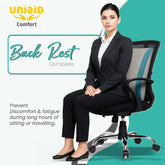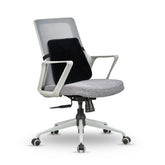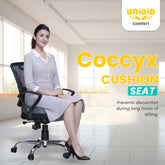How to Choose the Right Orthopedic Support for Your Pain
Pain in the back, joints, or muscles can significantly impact your daily life. Choosing the right orthopedic support—whether it’s a brace, belt, collar, or splint—can aid in pain relief, support mobility, and accelerate recovery. But with so many options available, how do you know which one is best for your specific condition?
Here’s a simple, expert-informed guide to help you make the right decision:
1. Identify the Type and Source of Pain
First, understand whether the pain is:
-
Acute (recent injury)
-
Chronic (ongoing condition)
-
Postural (due to lifestyle or ergonomic issues)
➡️ For example:
Lower back pain often requires a lumbar support belt, while wrist pain from typing may call for a wrist brace. Always consult a physiotherapist or orthopedic specialist to confirm the root cause.
2. Choose the Right Type of Support
Here’s a quick guide:
| Condition | Suggested Support Type |
|---|---|
| Lower Back Pain | Lumbar Belt / Sacro-Lumbar Support |
| Knee Pain or Instability | Hinged Knee Brace / Wrap-around Brace |
| Neck Strain or Cervical | Soft or Rigid Cervical Collar |
| Wrist/Thumb Discomfort | Wrist Brace / Thumb Spica Splint |
| Ankle Sprains | Ankle Compression Sleeve / Gel Brace |
3. Get the Right Fit and Size
Measure carefully using a tape and refer to the brand’s sizing chart. An improper fit can reduce effectiveness or even worsen your condition. Orthopedic products should fit snugly—but not too tight.
4. Match the Level of Support Needed
Some conditions require mild compression, while others need rigid immobilization.
➡️ Soft cervical collars help with posture fatigue.
➡️ Rigid braces are needed after fractures or surgeries.
Choose based on your condition’s severity and your doctor’s advice.
5. Check for Comfort & Breathability
Look for features like:
-
Skin-friendly materials
-
Moisture-wicking fabric
-
Padding and ergonomic shape
Products from UniAid Orthotics are designed with both clinical efficacy and user comfort in mind.
6. Don’t Skip Medical Advice
Orthopedic supports are most effective when recommended and monitored by a medical professional. Avoid self-diagnosing and using braces for extended periods without guidance.
✅ Final Thoughts
Choosing the right orthopedic support isn’t just about pain relief—it’s about improving mobility, preventing future injuries, and supporting your active lifestyle.
At UniAid Orthotics, we offer a wide range of trusted, easy-to-use orthopedic products tailored for every need.






